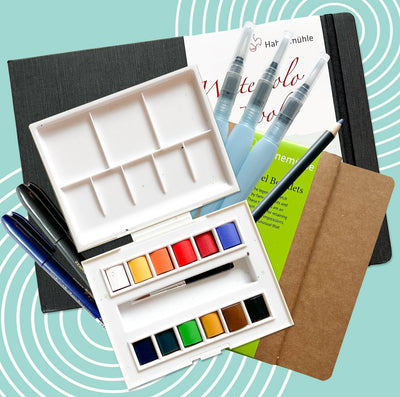Watch The Smart Art History Video Here:
What Is The "Treachery Of Images"?
Welcome back to another Smart Art History. Today we take a look into surrealism and the Treachery of Images!
The Treachery Of Images is a personal favorite painting of mine. Because it forces you to ask a simple question that has a seemingly simple answer. Though when you really begin to think about the implications of that answer… Your whole world begins to fall apart.
Though before I shatter your world, let’s first take a minute to talk about the man himself.
Rene Magritte - This Is Not An Artist
Magritte was a surrealist painter that never really thought of himself as an artist. This is a bit of a fun thing to consider, as his treachery of images continues. If as he says "This is not a pipe", then clearly this is not an artist.
Though Magritte never really considered himself a painter, but rather a thinker that simply would use images to express himself. He was very well versed in philosophy, and simply would use his painting as a way to communicate his philosophical ideas through a visual format.
Magritte’s primary agenda was to express to us a simple idea, and you could see the underlying theme across many of his other paintings. It is that the thing we want is never as simple as what it is we see, but rather it is always hiding just behind what is directly in front of us. The issue with this is that you can never really remove the obstruction entirely, because the issue is not within the object, but within thought and language itself.
Which brings us back to the treachery of images.
If Not A Pipe... Then What?
At first glance the image seems quite simple in its message. It’s a pipe.
Though what is a bit odd, is that below the pipe, is a message written directly to the viewer. This is NOT a pipe. So if this is not a pipe, then what is it?
On a view slightly below the surface, one would simply assume that this really is NOT a pipe, but simply a drawing of a pipe. A concept so simple to grasp, that even Magritte himself has once been quoted as saying,
"The famous pipe. How people reproached me for it! And yet, could you stuff my pipe? No, it's just a representation, is it not?"
Of course, this does seem to be a bit on the nose. It’s common sense, and no one would argue the opposite position. Although consider this.
Why It Is A Pipe
If I were to show you this image, what would you say it was?

This is a Dog
Just like this is an Apple:

This is a Computer:

A Pikachu:

A… Pipe?

What appears to be a linguistic misstep is really an intentional design in the way that language was put together. For hundreds of years it was believed that the names of things in a way came directly from the things themselves. That is one reason why you can look at a cultures language to understand the people of that culture better as a whole.
What Is Language?
In Australia, there is an aboriginal tribe who speaks a language known as Guugu Yimithirr. This language does not have words for relative directions such as left and right. They only know absolute directions such as north and south. And because of the relationship that language has with reality, we can assume that these people, not only have no word for relative direction, but no concept of relative direction at all!
Though what Magritte is trying to tell us through this painting, is that a word and its associated object have a totally arbitrary relationship. And this is where we begin to better understand what the true treachery of images actually is.
Realism vs. Surrealism
Realism and realistic paintings play on resemblance. Resemblance is meant to point beyond words to the object itself. It is a way of using images to bypass language to directly imprint the idea of the actual object within your head.
It was this point that caused many artists to jump from the real to the surreal. To leave behind the world of realism and resemblance to a world of the abstract. A world where you could understand emotion and ideas without being bogged down by trying to relate the image to what you already know. It was a way of being more honest in art.
Magritte however took a different approach to surrealism. He played directly with resemblance to push directly past what you think you know to send a more direct message, that what you think is real is simply just a facade.
The visual dependence on language is what Magritte really shows you in the treachery of images, in fact, it IS the treachery of images.
This is not a pipe… yes. Just as the word “pipe” written below is also not a pipe. And if that is true, then the whole sentence is actually a contradiction, which makes the whole painting complete nonsense.
So I ask you once more, if this is not a pipe, then what is it?

